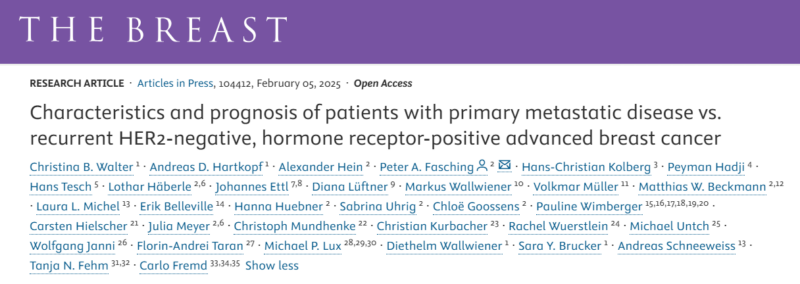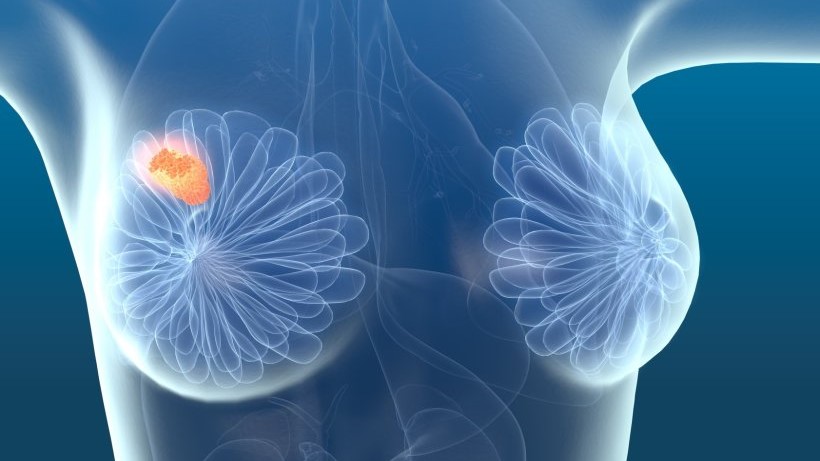A paper by Christina Walter et al. was published in The Breast Journal, titled:
Authors: Christina Walter, Andreas Hartkopf, Alexander Hein, Tanja Fehm, Carlo Fremd et al.

This study aimed to assess the prognosis of patients with de novo metastatic breast cancer (dnMBC) compared to those with recurrent metastatic breast cancer (rMBC) in hormone receptor-positive, HER2-negative cases.
Patients were categorized based on whether their metastasis occurred at initial diagnosis (dnMBC) or after a period of no metastatic disease (rMBC), with the latter further subdivided based on the time from primary diagnosis to metastasis (TDTM): less than 5 years or 5 years and more.
The study analyzed progression-free survival (PFS) and overall survival (OS) using Cox regression models, adjusting for age, body mass index, grading, metastasis site, and therapy type.
The analysis found that metastasis status significantly influenced PFS. Patients with dnMBC had the most favorable prognosis, with median PFS of 20.3 months, compared to 8 months for rMBC with TDTM < 5 years, and 11.8 months for rMBC with TDTM ≥ 5 years.
Hazard ratios for PFS were 1.75 for rMBC with TDTM < 5 years (p<0.001) and 1.25 for rMBC with TDTM ≥ 5 years (p=0.12). This impact on PFS was consistent across all clinicopathological subgroups, and no significant differences were observed between subgroups defined by age or metastasis site.
For OS, with a median follow-up of 18 months, metastatic status also played a significant role. Patients with rMBC TDTM < 5 years had an adjusted hazard ratio (HR) of 2.04 (95% CI: 1.34-3.10; p<0.001), while those with rMBC TDTM ≥ 5 years had an HR of 1.42 (95% CI: 0.93-2.17; p=0.10) compared to those with dnMBC.
The median survival times and survival rates were consistent with these findings. Subgroup-specific analyses for OS were not possible due to small sample sizes, but overall, the data suggested that patients with rMBC, particularly with metastasis occurring within 5 years of initial diagnosis, had worse survival outcomes compared to those with dnMBC.
These findings underline the importance of metastasis timing in determining prognosis for HR-positive, HER2-negative metastatic breast cancer patients. Incorporating metastasis status into clinical trials and treatment planning could help stratify patients more effectively, ensuring that those with higher-risk metastatic patterns are identified and managed appropriately.
Read more posts about Breast Cancer on oncodaily.com.
